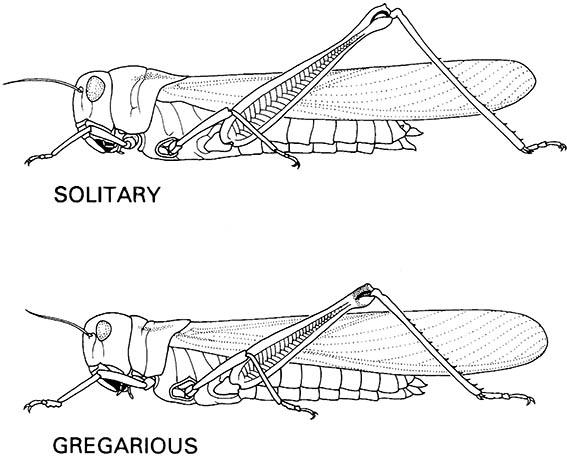Figures 6.13

Figures 6.13. Solitary and gregarious females of the migratory locust, Locusta migratoria (Orthoptera: Acrididae).
The solitaria adults have a pronounced pronotal crest and the femora are larger relative to the body and wing than in the gregaria adults. Intermediate morphologies occur in the transiens (transient stage) during the transformation from solitaria to gregaria or the reverse.

